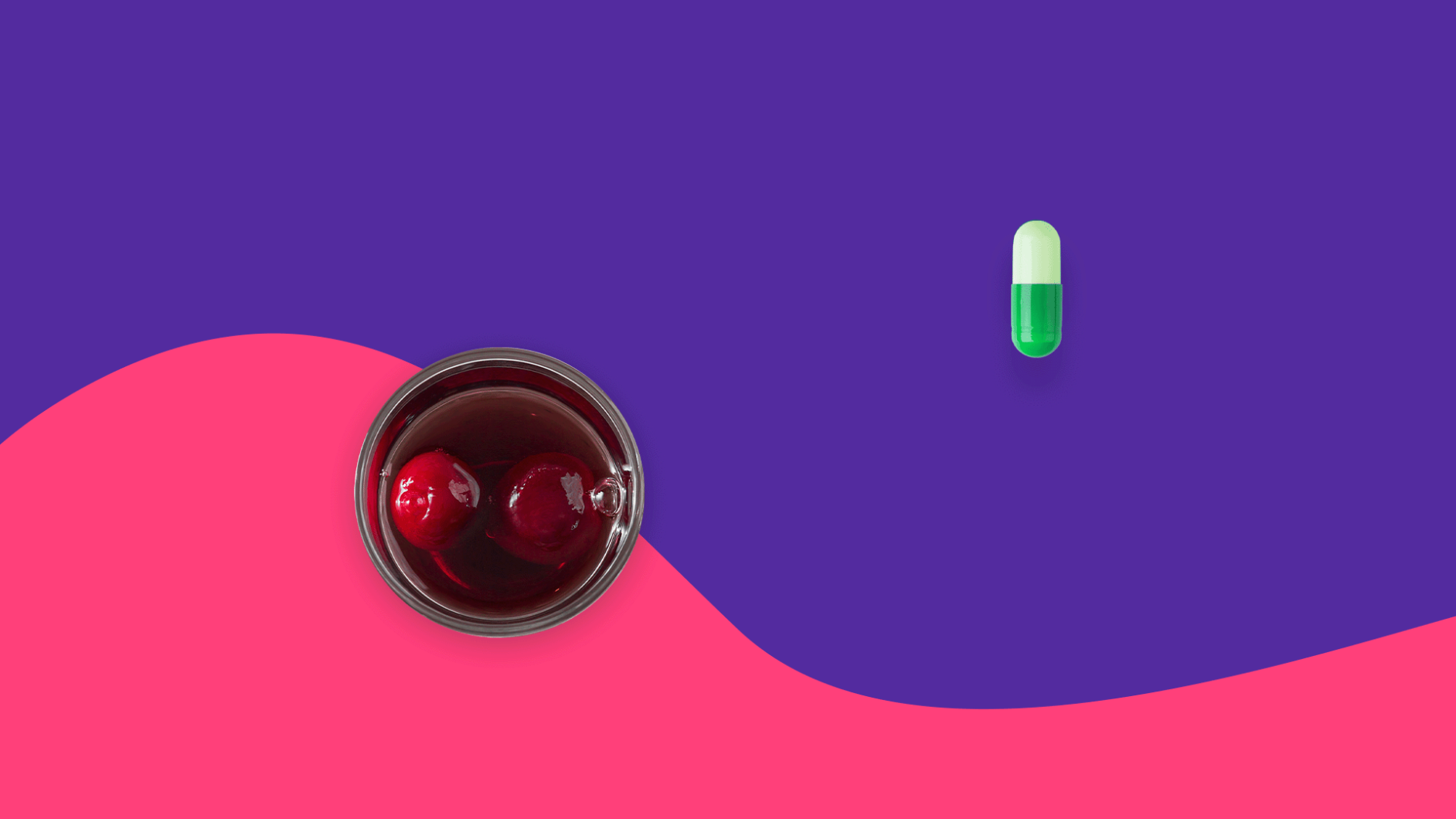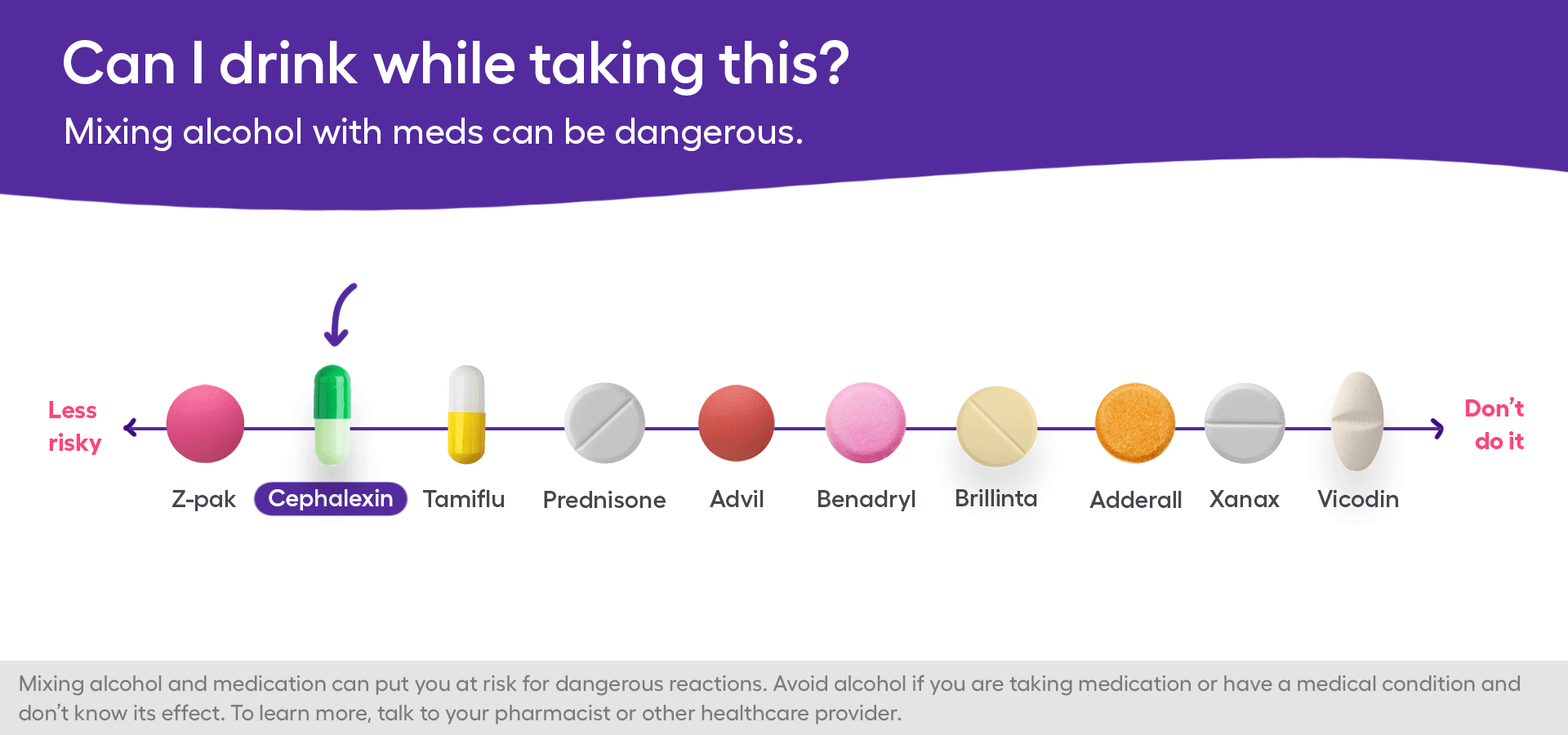Key takeaways
Cephalexin is a commonly prescribed antibiotic that treats a variety of infections and is generally safe with fewer side effects and drug interactions, but it’s recommended to avoid alcohol during treatment.
Mixing cephalexin and alcohol may not directly affect the drug’s effectiveness, but can lead to exacerbated side effects like nausea, vomiting, and indigestion, and can interfere with the immune system.
Chronic alcohol consumption can weaken the immune system, which might hinder the body’s ability to fight infections.
Healthcare providers suggest abstaining from alcohol while on cephalexin to avoid potential side effects and ensure the effectiveness of the treatment, especially in individuals with alcohol use disorder or heavy drinkers.
Cephalexin is a commonly prescribed antibiotic used to treat a variety of infections. A healthcare provider may prescribe cephalexin if you have an infection of the middle ear, respiratory tract, skin, bone, or urinary tract. Cephalexin is a relatively safe antibiotic that causes fewer side effects and is involved with fewer drug interactions than other antibiotics and meds. But what about mixing cephalexin and alcohol?
Although drinking alcohol in moderation is unlikely to cause harm with cephalexin, you may want to consider holding off on taking cephalexin with alcohol. The side effects of alcohol and cephalexin can overlap. Because alcohol can also interfere with the immune system, you may want to abstain from alcohol until after your treatment course has finished.
RELATED: What happens if you don’t finish antibiotics?
What is cephalexin?
Cephalexin is a generic antibiotic known by the brand name Keflex. It is classified as a cephalosporin antibiotic; it works by blocking the ability of bacteria to create a cell wall. The cell wall is a key part of the bacterial cell structure. Without it, the bacteria are unable to grow and survive.
Cephalexin can be taken as an oral capsule, tablet, or liquid suspension. It is approved to treat adults and children older than 1. Cephalexin is usually taken every six hours, although it may be prescribed to be taken every 12 hours. The actual dosage varies based on the age of the person and the infection being treated.
The usual course of treatment with cephalexin is around seven to 14 days.
Cephalexin can treat a range of different bacterial infections, including urinary tract infections (UTI), respiratory tract infections, skin infections, and ear infections. However, it should only be used to treat infections caused by susceptible bacteria. It is not effective for fungal or viral infections. The strains of bacteria cephalexin is effective against include:
- Streptococcus pneumoniae
- Streptococcus pyogenes
- Haemophilus influenzae
- Staphylococcus aureus
- Moraxella catarrhalis
- Escherichia coli
- Proteus mirabilis
- Klebsiella pneumoniae
Does cephalexin interact with alcohol?
According to the official FDA label, there are no cephalexin interactions with alcohol. In other words, drinking alcohol should not affect how cephalexin works and how effective it is for treating a bacterial infection.
Still, people can respond to cephalexin, alcohol, or both in different ways. Healthcare providers usually suggest waiting until treatment is completed to drink alcohol. Otherwise, there is a possibility that cephalexin and alcohol can lead to unwanted side effects. Cephalexin and alcohol cause similar side effects that may be worsened when the medication and alcohol are combined.
Side effects of mixing cephalexin and alcohol
The most common side effects of cephalexin include:
- Nausea
- Vomiting
- Diarrhea
- Indigestion (dyspepsia)
- Pain or discomfort around the stomach region
Diarrhea is a common side effect of many antibiotics, including penicillins and fluoroquinolones. Severe diarrhea has been reported with cephalexin, however. The use of antibiotics like cephalexin can alter the bacterial flora of the gut and lead to an overgrowth of a bacteria called Clostridium difficile, which can lead to severe diarrhea. If you are concerned about diarrhea, ask a healthcare professional about taking a probiotic supplement.
Other serious side effects of cephalexin include:
- Hypersensitivity or allergic reactions
- Hemolytic anemia
- Prolonged thrombin time (which may lead to an increased risk of bleeding)
Although cephalexin is generally safe and effective when used correctly, side effects are possible. In addition, stopping treatment with cephalexin too early or taking it incorrectly could lead to antibiotic resistance. If a person develops antibiotic resistance, a different antibiotic may be needed for a longer period of treatment.
Alcohol can also cause adverse effects in the body, including:
- Mood and behavioral changes
- Slurred speech
- Blurred vision
- Problems with coordination
- Drowsiness
- Nausea
- Vomiting
Drinking large amounts of alcohol, especially over a long period, may lead to more serious adverse effects, such as:
- Heart problems
- High blood pressure
- Liver disease
- Inflammation of the pancreas (pancreatitis)
- Increased risk of cancer
- Weakened immune system
Combining cephalexin and alcohol could lead to worsened gastrointestinal (GI) side effects, such as nausea, vomiting, and indigestion. In addition, cephalexin and alcohol both have blood thinning properties. Combining the two could pose a bleeding problem, especially if you have blood clotting issues and you take a blood thinner medication like warfarin.
Because chronic alcohol consumption can also weaken the immune system, it’s best to avoid alcohol while your body is fighting an infection. When your body is dealing with a bacterial infection, rest and staying hydrated with the right nutrients are important. Chronic alcohol use is linked to chronic sleep disturbances and overall low quality of sleep. People with alcohol use disorder are also known to experience vitamin and mineral deficiencies. Alcohol can disrupt the absorption of nutrients in the gut due to its effects on the liver, pancreas, and stomach lining.
Mixing antibiotics like cephalexin with alcohol
Disulfiram-like reactions have been reported in people combining antibiotics and alcohol. Disulfiram is a medication used to treat alcohol use disorder. Combining alcohol and disulfiram leads to a buildup of acetaldehyde, the toxic byproduct of alcohol. Symptoms of a disulfiram-like reaction include flushing, nausea, vomiting, low blood pressure, and, in severe cases, death. The interaction between metronidazole and alcohol is widely discussed as the cause of unpleasant disulfiram-like side effects.
Combining cephalosporins like cephalexin and alcohol has also been linked to disulfiram-like reactions. One study reviewed 78 patients who consumed alcohol before or after being administered an intravenous (IV) cephalosporin. Around 6% of the patients experienced a disulfiram-like reaction.
In that same study, researchers mentioned the effects of combining cephalexin and alcohol in rats, which may translate to similar effects in humans. After being given a combination of cephalexin and alcohol, the rats experienced different adverse effects in the kidneys and stomach. It was found that combining alcohol and cephalexin decreased the protective effects of the lining of the stomach.
Gastritis, or the inflammation of the stomach lining, is a known complication of chronic alcohol use. As a result, people with alcohol use disorder are at a high risk of experiencing gastritis. People with alcohol use disorder or gastritis may want to avoid taking cephalexin due to the possibility of worsened GI side effects, in addition to a potential disulfiram-like reaction.
When to seek medical help
If you are taking cephalexin for a bacterial infection and you’re not feeling better after a few days of treatment, you may want to consult your healthcare provider. Your healthcare provider may recommend other treatment options. If you have drunk alcohol while on cephalexin treatment and you start to feel bad, you should also consult your healthcare provider.
You should seek immediate medical attention if you experience any of the following after taking cephalexin alone or mixing it with alcohol:
- Severe rash
- Hives
- Swelling of the lips, eyes, mouth, or throat
- Difficulty breathing
These signs and symptoms could indicate a serious allergic reaction.
Tell your healthcare provider about other prescription drugs you may be taking. Cephalexin may interact with other drugs, leading to adverse reactions requiring medical attention.
Bottom line: Can you drink on cephalexin treatment?
If you have an occasional drink with cephalexin and remember to drink in moderation, you’re unlikely to experience any severe adverse reactions. Moderate consumption of alcohol involves drinking two drinks or less per day for men and one drink or less per day for women. If you want to be extra cautious, you should avoid drinking any alcohol during your course of treatment with cephalexin.
RELATED: What happens when you stop drinking?
In some cases, you may experience unpleasant side effects after taking cephalexin with alcohol, such as increased nausea, vomiting, and an upset stomach. If you have been diagnosed with alcohol use disorder or you drink heavily, you should tell your healthcare provider before starting treatment with cephalexin. Chronic, heavy alcohol use can lead to a weakened immune system, poor sleep, and poor nutrient absorption, which can all affect how your body fights an infection. In addition, combining alcohol and cephalexin may lead to an increased risk of bleeding and gastritis.
If you have any questions or concerns about taking your antibiotic, you should talk to your doctor or healthcare provider for medical advice. Whether it’s about potential side effects, drug interactions, or other precautions, your healthcare team will be able to address any concerns you have.




